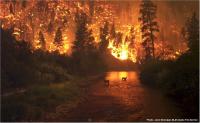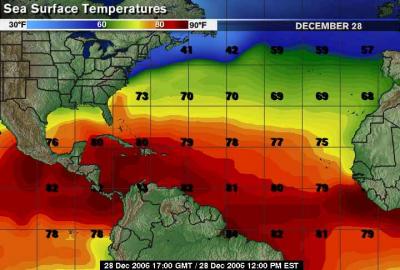 This week we talk about Chicago’s green sidewalks initiative. They are using solar panels on bus stops and an innovative new sidewalk material. Also this week, some news that global warming, specifically the warming of the Atlantic ocean may have an effect on forest fires in the western part of the U.S.
This week we talk about Chicago’s green sidewalks initiative. They are using solar panels on bus stops and an innovative new sidewalk material. Also this week, some news that global warming, specifically the warming of the Atlantic ocean may have an effect on forest fires in the western part of the U.S.
Lets round up that news!
Chicago has long been known as the windy city (it got the name from the politicians of the city blowing hot air) but it also has plenty of sun. With this in mind it seems the Chicago Department of the Environment decided to save a little money with some solar power.
from here
Chicago’s Department of Environment took a big “green” step into the future Wednesday. By “green,” the city means the project not only improves quality of life, but also improves the environment. ABC7’s Frank Mathie says it all has to do with new bus shelters and strangely colored sidewalks.
First of all, the new bus shelters. The shelter at 400 N. Sacramento is the first of 100 that will be installed in the next year. Solar panels on top charge batteries that provide light from dusk to dawn.“We’re using the sun’s rays to power the shelter, which means we don’t have to pay for electricity. So we’re saving about $200 a year on each of these shelters on the energy bill,” said Sadhu Johnston, Comm. Chicago Dept. of Environment.
They have also introduced some new recycled side walk.
Also introduced Wednesday was a very unusual looking stretch of sidewalk just recently installed on the West Side at Sacramento and Franklin Boulevard.
“We’re going to be testing these in place for about a year, and then re-evaluating how they stand up both to traffic and to our cold weather conditions,” said Cheri Heramb, Chicago Department of Transportation acting commissioner.
Acting CDOT commissioner Cheri Heramb is talking about turning mountains of waste into a comfortable stroll down the street.
Five-hundred-fifty feet of experimental sidewalk on Sacramento near Franklin Boulevard. For all of us this sidewalk looks black. But we’re all wrong. It’s green.
“Because they are recycled rubber from tires. It’s green because it’s recycled,” said Heramb.
The sidewalk was installed in early November, and yes, it’s easier and faster than concrete. For now it’s about twice as expensive. But that could change in years to come.
“They’re easier on the joints. Plus we have the benefit of helping the environment by reducing the amount of used tires in landfills,” Heramb said.
In more depressing news it seems that Hurricanes might not be the only thing we have to worry about from a warmer Atlantic ocean.
from here
Researchers predict a decades-long increase in widespread fires across the Western United States in the coming years, based on a new study that reviews the link between sea-surface temperatures in the North Atlantic Ocean and the ferocity of wildfire seasons in the West.
Although scientists often cite the regional impacts of fluctuating Pacific Ocean temperatures — the El Niño/La Niña effect — a new look back across 500 years’ worth of wildfire history shows a different trend: Warmer surface temperatures in the North Atlantic translated to worse wildfire seasons on the West Coast.
The Atlantic Ocean is entering its next warm phase, scientists note. And global warming will exacerbate the trend.
The world is a complex interlocking system. As we find out more and more about this system is seems that everything is related, and that no action that we as humans do does not effect the entire planet. This means two things. One that our local actions can negatively affect the rest of the world, and two, our positive actions can affect the rest of the world. The article goes on to say.
The Atlantic is thought to be entering its warm phase. Scientists aren’t sure where in the cycle it is, but hurricane watchers speculate there’s more warming on the way. (A warmer Atlantic also births more and stronger hurricanes.)
Scientists say the Atlantic is already warmer as a result of global warming, with more of that warming on the way — purchased, so to speak, but not yet delivered because of the lag between industrial emissions and climate change.
So a key question facing those watching the West is how bad fire conditions will get in the coming decades.
Field said: “We’ve seen a number of large wildfire years recently. Our projections call for more warming, and more (fire) intensity.”

